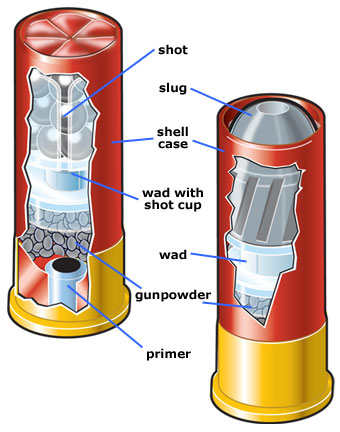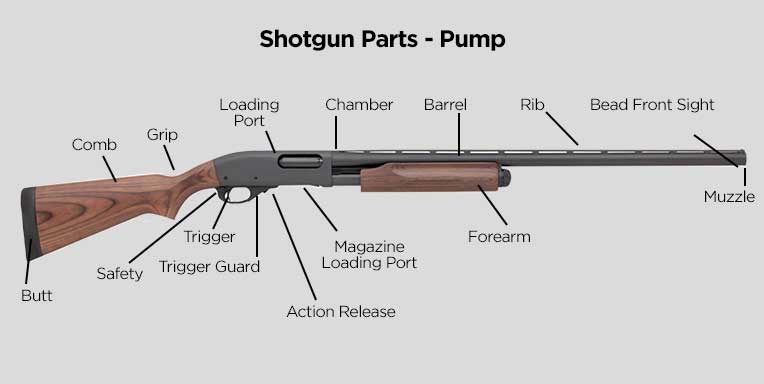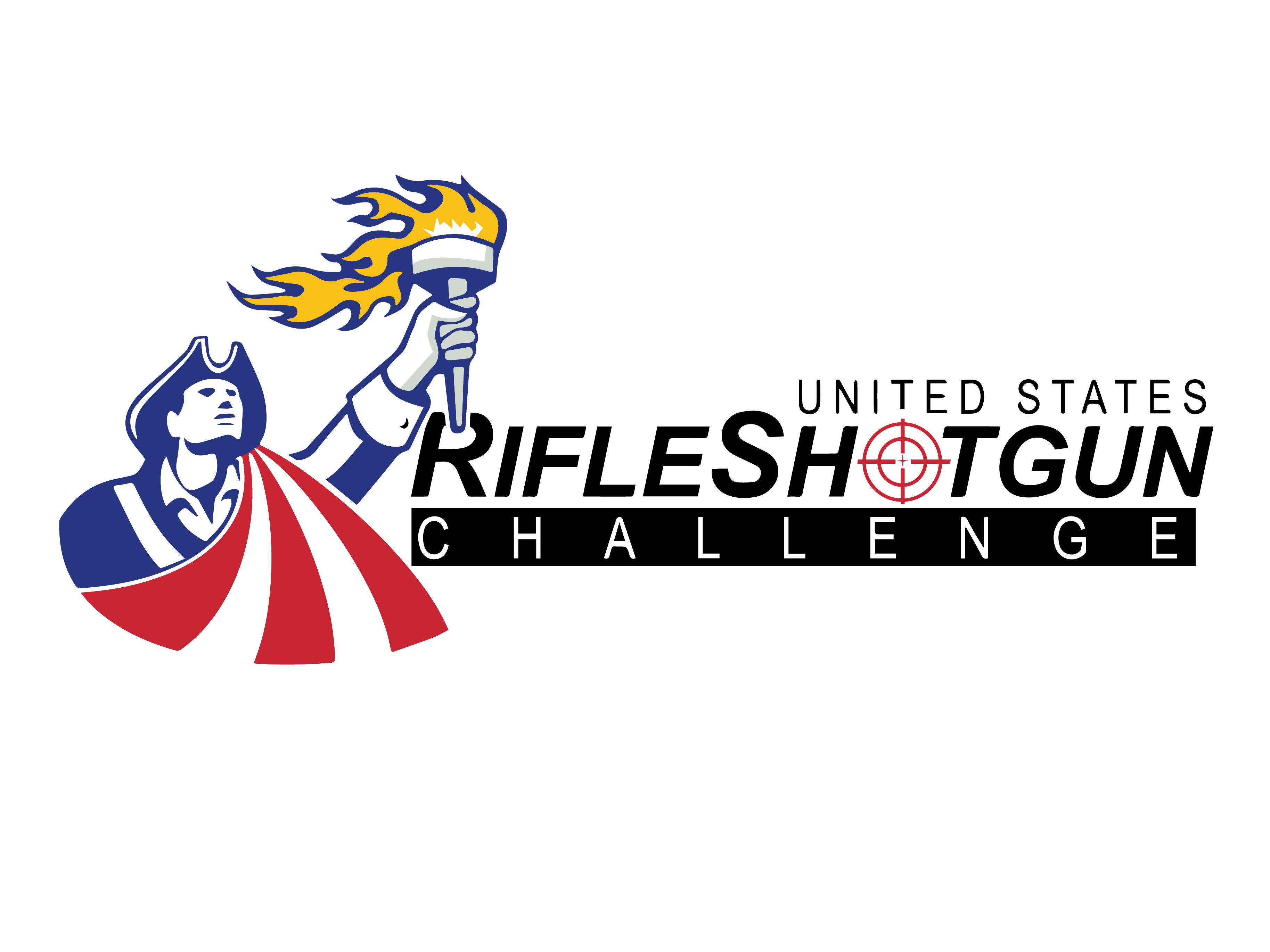Shotguns are the only category of weapons that can launch multiple projectiles with a single discharge. The diversity of projectiles a shotgun can fire makes it an adaptable and unique weapon. There are three common types of shotgun shell.
The type of shell selected will vary based on the weapon’s intended purpose. Birdshot loads (TTT-12) will contain many small, round metal projectiles which, when fired, will create a shot pattern. This pattern Increases the odds of hitting a target. Size 6 & 71/2 are very popular for competitions. The buckshot load normally contains 8 metal projectiles while the slug contains only 1. The grooves on the outside of a slug cause the bullet to spin while traveling through the smooth-bore barrel of a shotgun, increasing its accuracy.


Gauges and Shell Length
There are entire books written about shotshell gauges, their history, nomenclature, performance and more. You should certainly explore them once you’ve discovered how much fun the shotgun games are, but here’s what you need to know to get started.
Starting with the largest, today’s common shotgun gauges include the 10-, 12-, 20-, 16 and 28-gauge, with the .410-bore as the smallest shotgun shell. (The .410 is actually a caliber, not a gauge, but it’s still a shotshell.)
Just as important as the gauge is the gauge’s shell length. The shotshell lengths you’ll see on box labels will be 2½, 2¾, 3 and 3½ inches. These measurement expressions are actually the length of the shotgun hull before it’s been loaded and had the end in front of the shot crimped closed by the factory.
- 10-Gauge—The big and hard-recoiling 10 is used almost exclusively by hunters. It is always a 3½-inch shell.
- 12-Gauge—This is the most popular shotgun shell for nearly every game or chore imaginable. The 12-gauge is readily available in 2¾-, 3- and 3½-inch shell lengths and an enormous variety of power and shot size combinations. Because of its popularity and the millions of rounds sold every year, it is the least expensive gauge.
- 16-Gauge—Once quite popular, this one has seen better days. You can find them new occasionally, but you’ll most often find one on a used gun rack. It is a lovely mix of manageable recoil and excellent patterning that falls between the 12- and 20-gague, so if you find one you like, give it a try. Ammo can be a bit tricky to find on retailers’ shelves sometimes, but that’s why we have the internet. You will almost never find it in anything other than 2¾-inch shells.
- 20-Gauge—This is nearly as popular as the 12-gauge, but, being smaller, it is more limited in application than the 12. There’s simply not as much powder pushing the pellets, and there are fewer pellets. It is a super choice for new students, especially those starting out by learning skeet, and because the guns themselves are smaller and lighter than their 12-gauge counterparts, tend to fit women and youth shooters well. You’ll find this gauge in 2¾- and 3-inch shells.
- 28-Gauge—Smaller yet than those above, this is a favorite with many upland bird shooters. Skeet and sporting clays shooters also use this gauge for “sub-gauge” competition—events just for the 20-, 28- and .410-bore. You will find the 28-gauge mostly in 2¾-inch loads, though there are some 3-inch loads and firearms for hunters. It is very light recoiling, and the guns are scaled in size appropriate to this smaller gauge.
- .410-Bore—For sporting uses, most consider this a specialty round for talented hands only, whether for the clay games or hunting. Many used to think it was a great beginners round, since it has so little recoil, but its small payload of pellets, low power and limited range can make getting those first hits frustrating for those just learning the “swing of things.” The .410-bore does find great favor in short-barreled home-defense shotguns and in some specially designed handguns that accept this shell. It can be found in 2½-inch or 3-inch lengths.
Shotgun Diagrams


Loading and Unloading Explained
Pump-Action Shotgun Loading
Loading the Pump-Action Shotgun
- Check that the shotgun’s chamber is empty and the action is open and engage the safety.
- Insert a shell into the chamber (you can simply drop it in).
- Slide the forearm forward to close the action and chamber the round.
- Insert another shell into the magazine tube under the barrel by pushing it forward until it clicks into place.
- Insert additional shells into the magazine tube under the barrel.
Unloading the Pump-Action Shotgun
- Engage the safety.
- Point the shotgun in a safe direction.
- Rack the action back to eject any chambered shells.
- Keep the action open to visually and physically confirm the shotgun is unloaded.
Semi-Automatic Shotgun Loading
Loading the Semi-Automatic Shotgun
- Ensure the shotgun’s chamber is empty before starting and the safety is engaged.
- Insert a shell directly into the chamber.
- Close the action, either by racking the bolt or pressing a release button, depending on the shotgun model.
- Insert additional shells into the magazine tube under the barrel.
Unloading the Semi-Automatic Shotgun
- Engage the safety.
- Point the shotgun in a safe direction.
- Rack the bolt to eject the chambered shell.
- Perform a visual and tactile inspection to verify that the shotgun is unloaded.
Learning how to properly load and unload a shotgun is an essential skill. Remember to always prioritize safety by pointing the shotgun in a safe direction, engaging the safety, and keeping your finger off the trigger until you’re ready to shoot. Practice loading and unloading your shotgun regularly to become comfortable and proficient with this crucial aspect of firearm handling.
